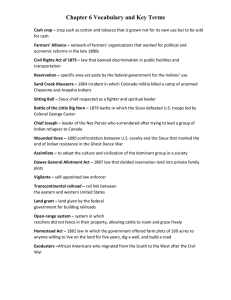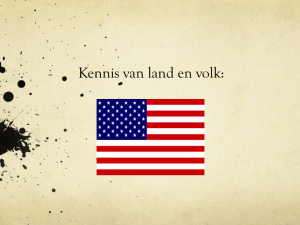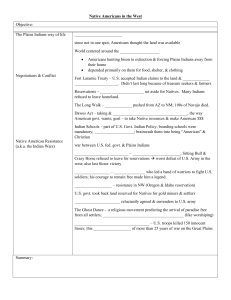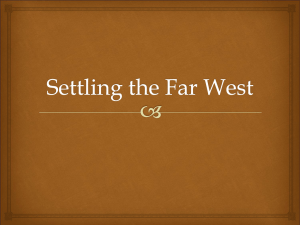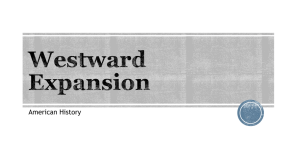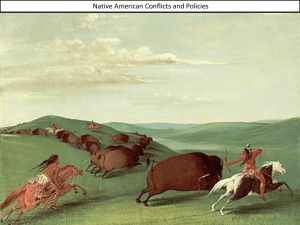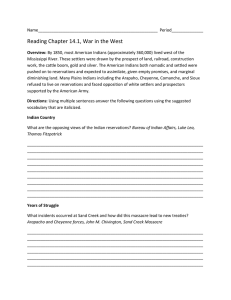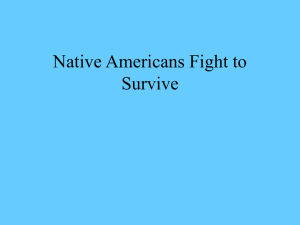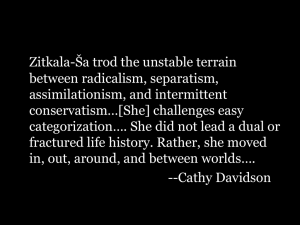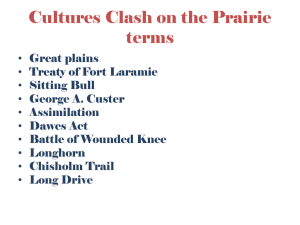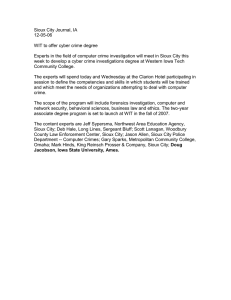15.2 Questions
advertisement
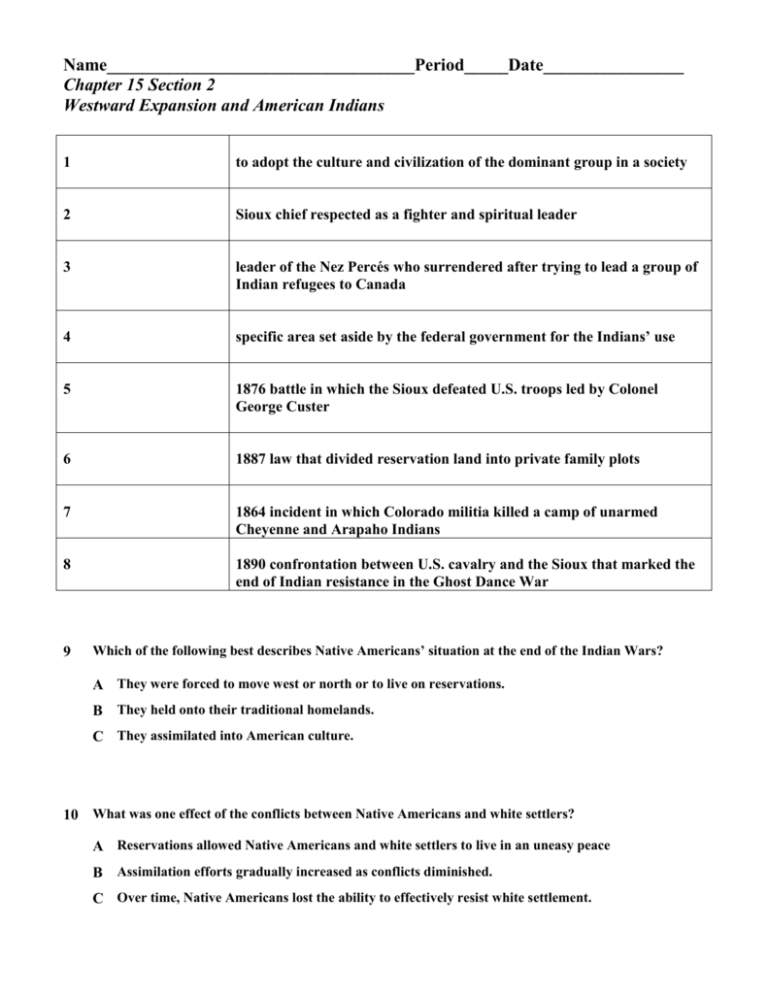
Name___________________________________Period_____Date________________ Chapter 15 Section 2 Westward Expansion and American Indians 1 to adopt the culture and civilization of the dominant group in a society 2 Sioux chief respected as a fighter and spiritual leader 3 leader of the Nez Percés who surrendered after trying to lead a group of Indian refugees to Canada 4 specific area set aside by the federal government for the Indians’ use 5 1876 battle in which the Sioux defeated U.S. troops led by Colonel George Custer 6 1887 law that divided reservation land into private family plots 7 1864 incident in which Colorado militia killed a camp of unarmed Cheyenne and Arapaho Indians 8 1890 confrontation between U.S. cavalry and the Sioux that marked the end of Indian resistance in the Ghost Dance War 9 Which of the following best describes Native Americans’ situation at the end of the Indian Wars? A They were forced to move west or north or to live on reservations. B They held onto their traditional homelands. C They assimilated into American culture. 10 What was one effect of the conflicts between Native Americans and white settlers? A Reservations allowed Native Americans and white settlers to live in an uneasy peace B Assimilation efforts gradually increased as conflicts diminished. C Over time, Native Americans lost the ability to effectively resist white settlement. 11 In contrast to white settlers, Native Americans viewed nature as A less important than railroads. B a resource to provide wealth. C sacred. 12 Native American civilizations were threatened by A drought. B diseases introduced by white settlers. C other Native American groups. 13 How did the U.S. government respond to attacks by Sioux Indians in eastern Minnesota? A pushed the Sioux into the Dakotas B occupied Minnesota C ignored the Sioux 14 The assimilation of Native Americans was a goal of A leaders such as Crazy Horse. B the Dawes General Allotment Act. C the Battle of Little Big Horn.
